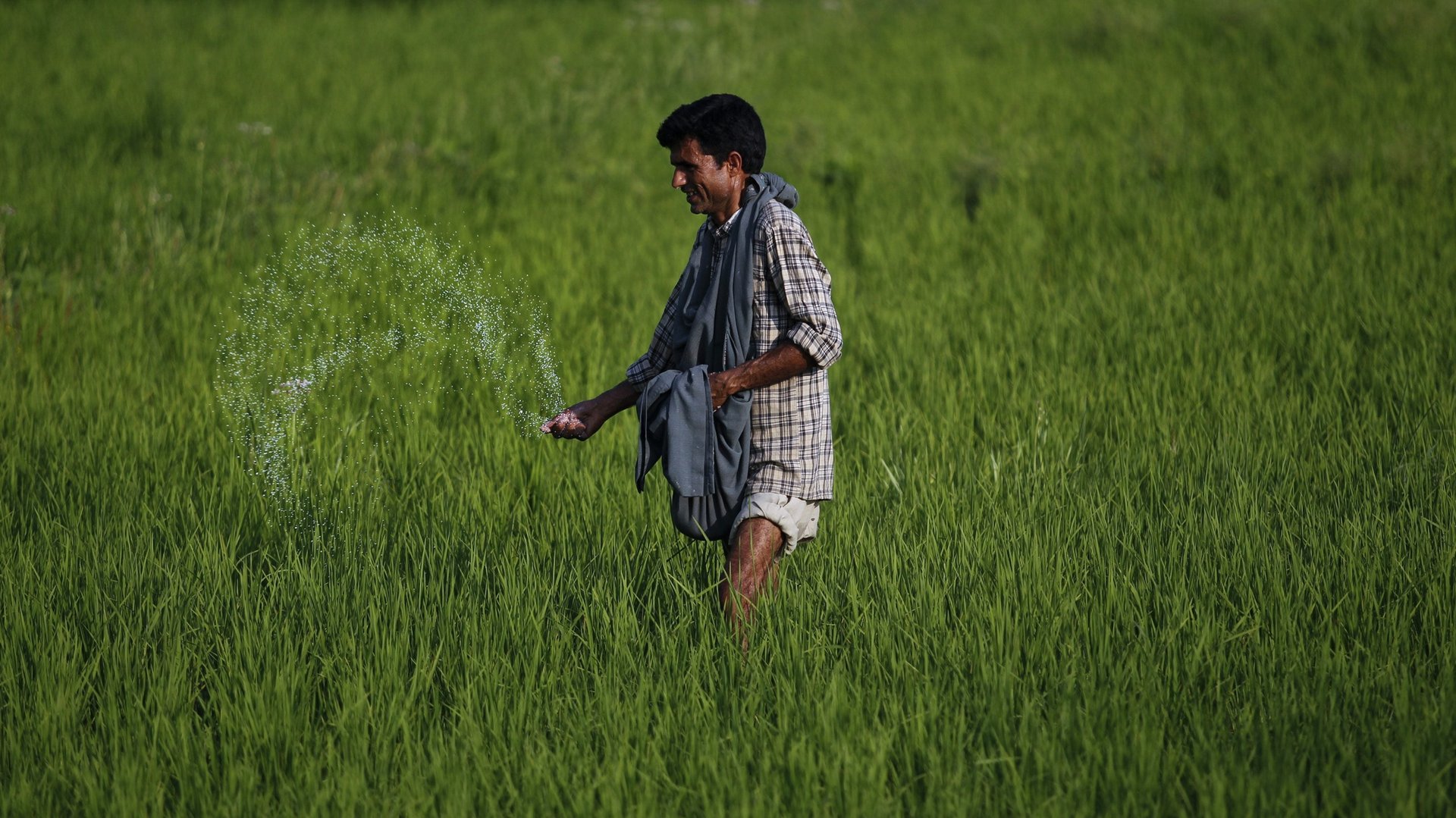India is looking for alternatives to Russian fertiliser
Russia, the world’s largest exporter of fertilisers, accounts for around 20% of the global supplies of potash.


Russia, the world’s largest exporter of fertilisers, accounts for around 20% of the global supplies of potash.
The war with Ukraine has compelled countries like India, which use potash, phosphate, and nitrogen-containing fertilisers, to now look for alternative suppliers. Especially since Russia might even consider a halt to fertiliser exports following Western sanctions.
“Losing Russia and their large export volumes would be a severe supply-side shock to the market,” Alexis Maxwell, an analyst at Bloomberg’s Green Markets said.
Demand for fertilisers in India
India imports four types of fertilisers: urea, diammonium phosphate (DAP), muriate of potash (MOP) and nitrogen-phosphorous-potassium (NPK). It subsidises potash to make it more affordable for farmers. Its annual budget allocated about 1.05 lakh crore rupees ($14 billion) to its fertiliser-subsidy programme in February this year.
With a requirement of 3 million tonnes, India’s potash requirement is totally met by imports from Belarus and Russia.
In fact, in November 2021, Russia’s fertiliser exports to India jumped by a whopping 469% to $106 million from over a year ago, according to the international trade data platform Observatory of Economic Complexity.
Yet, on Feb. 28 this year, finance minister Nirmala Sitharaman had expressed concern over the impact of the Russia-Ukraine war on India’s trade, “particularly to the farming sector.”
This assumed significance, given the assembly elections in agriculturally dominant states of Punjab and Uttar Pradesh which concluded on March 7. Prime minister Narendra Modi’s administration would not want to leave any stone unturned to regain lost ground, especially following the controversial farm laws of 2020.
“We are trying to get DAP and MOP from Jordan, Morocco, and Canada to meet the fertiliser requirement for the next financial year,” Kishor Rungta, chairman at Fertiliser Association of India (southern region), told the BusinessLine newspaper.
In a bid to insulate farmers against rising prices, the Indian government is also preparing to negotiate with Russia for the long-term supply of fertilisers for the first time in 30 years, Reuters reported.
What about India’s domestic fertiliser manufacturing?
Experts have, for long, sought a liberal agriculture policy to promote fertiliser production in India.
The lack of a non-cohesive policy has compelled several top fertiliser manufacturers like Tata Chemicals and Aditya Birla Group to exit or scale down their business. They have cited factors like a lopsided usage of urea, delayed subsidy payments to manufacturers, and a lack of investment in the sector to justify the scaledown.
In 2019, India revived five fertiliser manufacturing units to maximise domestic production, but these plants only focus on the highly-subsidised urea. India imports 25% of its requirement of urea, 90% in case of phosphates, either as raw material or finished fertilisers and 100% of potash.